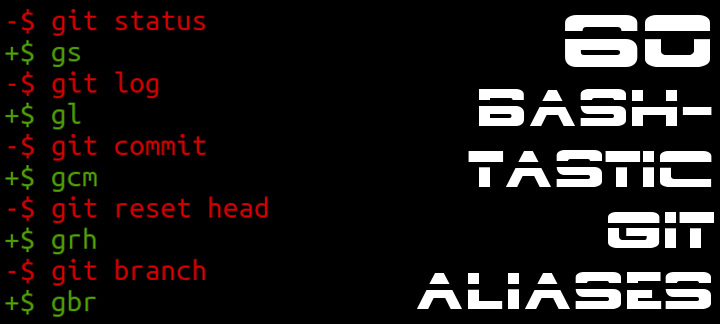Tail Call Optimization in Ruby: Background

Back in November, care of /r/ruby, I came across a blog post by Nithin Bekal, Tail Call Optimization in Ruby, demonstrating Ruby's built-in support for tail call optimization and I have to admit, my mind was a little blown.
It's not that I have a specific need for tail call optimization. In fact, I can't think of even a single situation where I would have done things differently if I'd known the VM supported it. But, I guess I was surprised to find that tail call optimization was just hiding somewhere in the Ruby VM, waiting to be flipped on with a compile flag, or at runtime.
I think it was this ability to just turn it on at any time that blew my mind. Not just that it was hiding in there somewhere, but that the VM is flexible enough to swap in the machinery to support tail call optimization whenever you decide you want it. Pretty awesome.
With no particular use for tail call optimization, I've just been sitting on the knowledge, the notion bouncing around in my head. That is, until earlier this week when I decided I would try to apply some of what I learned from reading Pat Shaughnessy's Ruby Under a Microscope to better understanding how the Ruby VM can be so flexible when it comes to tail call optimization.
Though I think that that will make for an interesting blog post, it's turned into a bit of an epic. So this week, I'm going to begin with a little background on tail call optimization and hopefully build on what others have already shared with some of what I've learned about Ruby's implementation of tail call optimization while trudging through Ruby's depths. Then, in my next post, with the stage already set, we can get into the internals of how the Ruby VM makes tail call optimization happen at runtime.
Let's get started!
A little background on tail call optimization
Nithin's article does a great job of explaining tail recursive functions and tail call optimization, so if you're a little iffy on either subject, I'd recommend reading that before you continue with this post. The Tail call entry in Wikipedia is also a useful resource for even more depth on the subject.
To summarize, tail call optimization, or tail call elimination as it is also known, is a special feature of some kinds of tail recursive functions that allows for the tail call to be implemented without adding a new stack frame to the call stack. This allows for more efficient tail calls while also allowing the size of the stack to remain constant which in turn allows recursion to be used in situations that might otherwise encounter a stack overflow without tail call optimization.
Ruby and tail call optimization
Starting with Ruby 1.9.2, the Ruby VM offers built-in, though experimental, support for tail call optimization. That said, there are other ways of achieving tail call optimization without enabling it in the VM. Magnus Holm offers a couple of other hacks for achieving tail call optimization in Ruby in his blog post Tailin' Ruby (alternate), which is worth the read just for the innovative ways he attempts to solve the problem, even if you're fine to use the Ruby VM's implementation of tail call optimization. Maybe it's just because I haven't had an itch that I needed tail call optimization to scratch, but using redo to emulate tail call optimization in a performant fashion is pretty damn clever.
Now, although support for tail call optimization is built into the VM, because of its experimental nature it isn't enabled by default and must be turned on either with a flag when compiling Ruby or by configuring RubyVM::InstructionSequence at runtime with special compile options. There was some talk of enabling tail call optimization by default around the time that Ruby 2.0 was released, however this hasn't come to be for a number of reasons: Primary concerns were that tail call optimization makes it difficult to implement set_trace_func and also causes backtrace weirdness due to the absence of a new stack frame.
Now that we have a little background on tail call optimization in Ruby, let's take a look at an example of a tail recursive, tail call optimizable function.
A tail recursive Guinea pig
In order for us to take Ruby's implementation of tail call optimization for a test drive and to help us get to the bottom of Ruby's implementation of tail call optimization in my next post, we'll first need a tail recursive function to be the subject of our experiments. As it turns out, we can actually extract such a subject from the Ruby source code itself.
Depending on your feelings about the recent debate regarding how Ruby is tested [1] [2], it may surprise you to learn that our Guinea pig comes directly from Ruby's built-in test suite. After all, though tail call optimization may not be enabled by default, and though it may only be experimental at this time, it's not unreasonable to think that there'd be a test for it somewhere. That somewhere is among a handful of other tests for various optimizations to the Ruby VM in the Ruby source at ruby/test/ruby/test_optimization.rb.
The test that is home to our Guinea pig is somewhat unremarkable, so though you're welcome to review the full contents of the test, for our purposes I've extracted the tail recursive factorial function used by the test with some refactoring to, among other things, isolate the HEREDOC and make it work outside of the test:
code = <<-CODE
class Factorial
def self.fact_helper(n, res)
n == 1 ? res : fact_helper(n - 1, n * res)
end
def self.fact(n)
fact_helper(n, 1)
end
end
CODE
options = {
tailcall_optimization: true,
trace_instruction: false,
}
RubyVM::InstructionSequence.new(code, nil, nil, nil, options).eval
The tail recursive method of interest above is the fact_helper method. It should hopefully be pretty obvious that fact_helper is tail recursive given that, in all but the base case, the final action of the method is the invocation of the itself with primitive values. Other than the tail recursive nature of this function, there are a couple of other things going on here that are worth noting.
First, as I alluded to before in regard to tail call optimization not being enabled by default, currently it is not possible to turn on tail call optimization without also disabling the set_trace_func capabilities of the VM. This can be seen above in the option to RubyVM::InstructionSequence setting trace_instruction to false.
Second, this example demonstrates the best strategy of enabling tail call optimization that I have come across so far. I say this because the other examples I've referenced have all enabled tail call optimization by changing RubyVM::InstructionSequence.compile_option, effectively enabling tail call optimization globally.
Though at least one source suggested that the modified compile options would only be applied to code directly compiled with RubyVM::InstructionSequence, this is incorrect. In fact, any files loaded after the change to RubyVM::InstructionSequence.compile_option will be compiled with tail call optimization enabled. This can be verified by running the following contrived test script that adapts our Guinea pig both to evidence the global nature of RubyVM::InstructionSequence.compile_option and to demonstrate the utility of tail call optimization.
# Flag indicating whether this is the first time time this file has been loaded
$first_load = true if $first_load.nil?
# Declare classes to facilitate #instance_eval later
class FirstLoadFactorial; end
class ReloadedFactorial; end
# On the first load, extend FirstLoadFactorial,
# On the second load, extend ReloadedFactorial.
klass = $first_load ? FirstLoadFactorial : ReloadedFactorial
# Tail recursive factorial adapted from
# https://github.com/ruby/ruby/blob/fcf6fa8781fe236a9761ad5d75fa1b87f1afeea2/test/ruby/test_optimization.rb#L213
klass.instance_eval do
def self.fact_helper(n, res)
n == 1 ? res : fact_helper(n - 1, n * res)
end
def self.fact(n)
fact_helper(n, 1)
end
end
# Turn on tailcall optimization
RubyVM::InstructionSequence.compile_option = {
tailcall_optimization: true,
trace_instruction: false,
}
# This check avoids calculating the factorial twice; ReloadedFactorial will only
# respond to :fact after the file has been reloaded.
if ReloadedFactorial.respond_to?(:fact)
begin
puts "FirstLoadFactorial: #{FirstLoadFactorial.fact(50000).to_s.length}"
rescue SystemStackError
puts 'FirstLoadFactorial: stack level too deep'
end
# 50000! is 213,237 digits long, so display just the length of the calculation
puts "ReloadedFactorial: #{ReloadedFactorial.fact(50000).to_s.length}"
end
# Reload the file on the first load only
if $first_load
$first_load = false
load __FILE__
end
# $ ruby tail_optimized_reload.rb
# FirstLoadFactorial: stack level too deep
# ReloadedFactorial: 213237
Since tail call optimization is still an experimental feature, if you're going to use tail call optimization in production code or in code that could become production code, the strategy demonstrated by the Ruby core test of creating a new RubyVM::InstructionSequence object that can be used to load/compile tail call optimized code without affecting other code compiled by the VM later is absolutely the right way to go.
End Part I
That does it for our initial foray into tail call optimization in Ruby. I hope you've found something here today worth the price of admission. Stay tuned for my next post in which we'll take our tail recursive Guinea pig for a deep dive into the internals of Ruby, all the way from the Ruby source, through the YARV instructions just below the surface, down deep into the C weeds in search of the source of Ruby's tail call optimization implementation. It'll certainly be an interesting ride.


